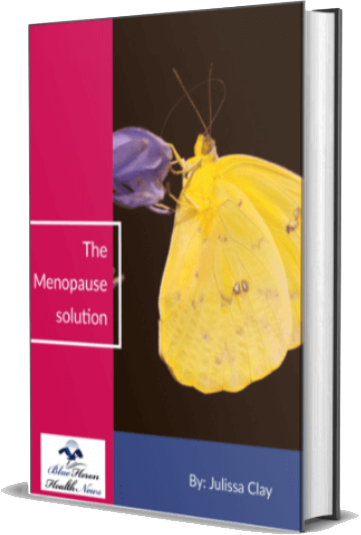
What hormonal changes occur during menopause?
During menopause, significant hormonal changes take place as the ovaries gradually reduce their production of key reproductive hormones, primarily estrogen and progesterone, and eventually stop releasing eggs. These changes are responsible for the physical and emotional symptoms that occur during this transition. Here’s a detailed look at the hormonal changes that occur during menopause:
1. Decline in Estrogen Levels
- Estrogen is one of the primary female sex hormones produced by the ovaries. It plays a crucial role in regulating the menstrual cycle, maintaining bone health, and supporting the health of the reproductive system, including the vaginal lining and breast tissue.
- Perimenopause: During perimenopause (the transitional period before menopause), estrogen levels fluctuate widely, sometimes rising and falling unpredictably. These fluctuations contribute to many of the common symptoms of perimenopause, such as irregular periods, hot flashes, and mood swings.
- Menopause: As the ovaries stop functioning, estrogen levels drop significantly. The body adjusts to lower levels of circulating estrogen, which results in the complete cessation of menstruation. This decrease in estrogen is responsible for many of the long-term effects of menopause, such as bone density loss and increased cardiovascular risk.
- Postmenopause: Estrogen remains low after menopause. While small amounts of estrogen are still produced by fat tissue and the adrenal glands, the levels are much lower than during the reproductive years. Low estrogen levels are linked to symptoms like vaginal dryness, thinning of the vaginal tissues, and an increased risk of osteoporosis.
2. Reduction in Progesterone
- Progesterone is another key hormone produced by the ovaries, particularly after ovulation, to regulate the menstrual cycle and prepare the uterus for pregnancy.
- Perimenopause: Progesterone levels begin to decline as ovulation becomes less regular. This can lead to irregular menstrual cycles and heavier or longer periods because progesterone helps balance the effects of estrogen on the uterine lining.
- Menopause: After menopause, when ovulation ceases entirely, progesterone levels drop to very low levels. Without ovulation, there is no need for the uterine lining to thicken and shed, which is why menstruation stops completely.
- The decline in progesterone, along with estrogen, contributes to symptoms like sleep disturbances and changes in mood.
3. Increase in Follicle-Stimulating Hormone (FSH)
- Follicle-stimulating hormone (FSH) is produced by the pituitary gland and is responsible for stimulating the growth of ovarian follicles (which contain eggs) during the menstrual cycle.
- Perimenopause: As the ovaries become less responsive to hormonal signals, the body produces more FSH in an attempt to stimulate the ovaries. FSH levels begin to rise in response to lower estrogen and progesterone production.
- Menopause: FSH levels become consistently high after menopause because the ovaries are no longer responding to stimulation. Elevated FSH levels are often used as a diagnostic marker to confirm that a woman has entered menopause.
4. Decrease in Luteinizing Hormone (LH)
- Luteinizing hormone (LH) is another hormone produced by the pituitary gland that triggers ovulation and stimulates the production of estrogen and progesterone from the ovaries.
- Perimenopause: During perimenopause, LH levels may fluctuate as the ovaries become less responsive. Irregular LH levels contribute to the unpredictable ovulation cycles typical of this stage.
- Menopause: After menopause, with the cessation of ovulation and the decline in ovarian function, LH levels may stabilize at higher levels but do not have the same impact since the ovaries no longer release eggs.
5. Testosterone
- Testosterone, although known as a male hormone, is also produced in small amounts by women’s ovaries and adrenal glands. It plays a role in libido (sexual desire), energy levels, and maintaining muscle mass.
- Perimenopause and Menopause: Testosterone levels may gradually decline with age, and the drop in estrogen levels can unmask the effects of low testosterone. Many women report a decrease in libido during menopause, partially due to reduced testosterone and estrogen.
6. Dehydroepiandrosterone (DHEA)
- DHEA is a hormone produced by the adrenal glands that serves as a precursor to estrogen and testosterone. It plays a role in maintaining muscle mass, mood, and energy levels.
- Menopause: DHEA levels also decline with age, which can contribute to the overall decrease in estrogen and testosterone in postmenopausal women. Low levels of DHEA are associated with reduced energy, libido, and a general decline in well-being.
7. Impact on Other Hormones
- Thyroid Hormones: Some women experience changes in thyroid function during menopause, as thyroid hormones (like thyroxine or T4) interact with estrogen. This can lead to thyroid imbalances that may mimic or exacerbate menopausal symptoms, such as fatigue, weight gain, or mood changes.
- Cortisol: Cortisol, the stress hormone, may become elevated during menopause due to the body’s adaptation to hormonal changes and stress. Increased cortisol levels can contribute to weight gain (especially abdominal fat), sleep problems, and mood disturbances.
Symptoms Related to Hormonal Changes During Menopause
The hormonal changes that occur during menopause lead to a wide range of symptoms, which vary in intensity from woman to woman. These symptoms include:
- Hot flashes: Sudden feelings of heat, often accompanied by sweating and a rapid heartbeat, are caused by fluctuating estrogen levels.
- Night sweats: Intense sweating during sleep, often a result of hormonal imbalances affecting the body’s temperature regulation.
- Mood swings and irritability: Hormonal fluctuations, particularly in estrogen and progesterone, can affect neurotransmitters like serotonin, leading to emotional instability.
- Vaginal dryness: The drop in estrogen causes thinning of the vaginal walls, leading to dryness, discomfort during intercourse, and an increased risk of infections.
- Sleep disturbances: Lower levels of progesterone, which has a calming effect, contribute to difficulty falling and staying asleep.
- Decreased libido: Declining testosterone and estrogen levels often lead to reduced sexual desire.
- Bone loss: Estrogen plays a key role in maintaining bone density, and its decline increases the risk of osteoporosis.
- Weight gain: Hormonal changes, especially low estrogen and increased cortisol, contribute to a slower metabolism and fat redistribution, often resulting in weight gain around the abdomen.
Conclusion
Menopause involves complex hormonal changes, primarily the decline in estrogen and progesterone, which lead to the cessation of menstruation and the end of a woman’s reproductive years. Other hormones, such as FSH and LH, rise as the body tries to stimulate the ovaries, while testosterone and DHEA also decrease, contributing to various symptoms. These hormonal changes affect a woman’s physical and emotional well-being, but many of the symptoms can be managed through lifestyle changes, hormone replacement therapy, and other treatments tailored to the individual.

The Menopause Solution™ By Julissa Clay – Blue Heron Health News The Menopause Solution it can be concluded easily that you should try this program at least once if menopause is destroying your internal organs or deteriorating your physical health to a considerable level. This program can help in resolving your health issues caused by perimenopause and menopause in a completely natural manner. You can use this program without any risk as you can get your money back if you are not satisfied with its results.